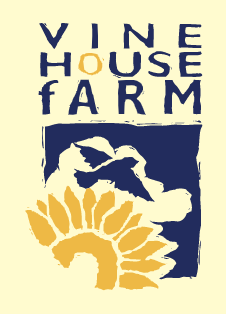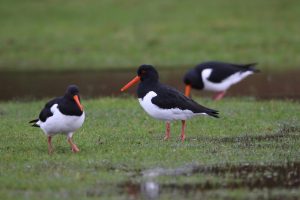
It has been a cool dry August, only five cooler Augusts in the last 50 years. Statistically it is our wettest month with an average of 53mm, or 2.1 ins of rain. It is a month when we need dry weather to harvest our crops, but we also need some rain to germinate the oil seed rape. This year I have only recorded 25mm or 1 inch of rain and all the rain that fell was a nuisance; it fell on 14 days delaying the combining and not wetting the soil.

Despite the month being drier than average, the harvest is being strung out because we have had so many days when we have had showers. The crops are at their best quality when they are ripe, and if they’re not harvested within a week, they start to lose quality. Milling wheat can soon become feed wheat and be worth £20-£30/tonne less. When the wheat is over ripe, strong winds can shake the wheat kernels out of the ear, as it did two years ago and break the barley heads off, as it did last year.
From now on it is a race against time – every day gets shorter and every day may get wetter. Twice during the last 10 years, farmers didn’t get all the autumn crops sown before Christmas due to wet weather, so no wonder you can see lights well after dark moving about fields. In general, winter sown crops pay better than spring sown crops, but by always sowing the winter crops, farmers have not had a proper rotation. The use of chemicals has enabled farmers to keep growing winter sown crops, but blackgrass, an autumn germinating grass, has multiplied so much, if weed-killers fail to kill even 0.001% of the blackgrass that germinates, there still will be a field full of it, which competes with the crop and reduces the yield of that crop.
In the second half of August, we’ve sown oil seed rape. In the last five years, very few farmers have made any money from oil seed rape because of the flea beetle. As the name suggests, its a very small beetle but can come in large numbers and eat a whole field of rape or eat enough of it to make the crop a write off. However, not every crop was badly affected last year. When we drilled it last autumn, we drilled it early and drilled buckwheat with it, to try and confuse the flea beetles and we had a reasonable crop. This year, we are drilling buckwheat and clover with our oilseed rape. Buckwheat is not frost hardy, so is killed by the first frost. It is a crop grown in eastern Europe and made into porridge. Clover will grow throughout the winter and hopefully provide the crop with some nitrogen, as well as confusing the flea beetle.
Our wheat yields are about 10-15% down on a ten year average. We put that down to lack of sunshine during the second half of June, which is when the wheat is in flower. Every crop needs sunshine when in flower to yield well. That lack of yield will be compensated by a higher wheat price, as wheat is in short supply worldwide. 10% less wheat in the world has made the wheat price rise by £50/tonne and if there is a 10% surplus, the price will go down by £50. The price of every crop in the world behaves in that way, when demand exceeds supply, the price jumps up.
Potatoes this year are a worry, two months ago all the potato crops were looking very well and a surplus was looming. Now because of the cool summer weather, the crops have not bulked up and so it is looking like a smaller crop. This may mean higher prices, but they are still growing so a lot can happen yet. Here I am worrying about our potatoes not bulking up, but if we all had big crops we would then have a surplus and prices would be low, maybe so low that we make a loss on them.


All those birds that feed their young with insects will have finished breeding by now, except Swallows and House Martins.
When an insect hatches, it has a creepy-crawly stage and that is what most birds feed their young on. The final stage of their life is when they are flying, when most birds are unable to catch them, except for the Swallows and House Martins. This is why they are still able to feed nestlings all through September. For those of you who are not sure which are Swallows and which are House Martins, Swallows nest in a building and House Martins nest under the eaves of houses.
In parts of the country where there are plenty of cattle, there may be young Swallows in the nest until the end of September. Not so in South Lincolnshire, as Swallows are now on their second brood and the last ones will be fledging in the second week of September. A few days after, they will be wending their way south to see if they can find better feeding areas. We then see Swallows for another 10 or 15 days, but they are not our Swallows, they are Swallows from further north. We could see a few stragglers for another week, but in general Swallows leave here more than three weeks earlier than they did 40 years ago, because there aren’t many flying insects about.
Very few of us can say that we have seen a bird on migration. At this time of year, I can see Swallows flying low over the farm, heading south or south west. These are Swallows on migration and I don’t see them every day. One day when I was on Holbeach Marsh, there were Swallows coming off the sea heading south west. They were following the Lincolnshire coast, but when the coast turned east they chose to continue south west, following the River Welland. The next day, I noticed Swallows flying south west over my farm and I now see it happening every year.
Swallows and House Martins are very fortunate in that they don’t have to fatten up before they migrate as they will be feeding on the wing as they head south. Most other species migrate at night as it is safer with not so many birds of prey about. Those birds that fly over oceans have to keep flying during the day – especially the Bar Tailed Godwits that fly from Alaska to New Zealand without a stop. This journey has been recorded as they have been fitted with radio trackers. It is without doubt the longest non-stop migration in the world and during that time, the bird does not eat or drink unless it can catch some rain water in flight. Wildlife is so amazing!
In 2017, we had about 150 nest boxes occupied by Tree Sparrows, they increased in numbers because I fed them all the year round. I am still feeding them all through the year, but this year we’ve only had about 50 nest boxes occupied. This has happened on nearly every site that had a big influx of Tree Sparrows. This could be because they’ve nested in holes in trees and after a few years these holes fill up with nesting material and they then have to move on. Generations of birds have had a habit of moving on and so that is what they have done here.
Linnets are now flocking up to where there is a surplus of food and I have a flock of about 100 now, which are feeding on a patch that I have left for them. Linnets do eat insects, but mainly rely on seeds – especially unripe seeds during the summer to feed their nestlings. If we can continue to provide seeds for them, they will continue to be around the farm. I could say that about insects, but insects fly around and although I might breed a lot of insects, a lot of them fly away, or get blown away, to areas that are not insect friendly.



